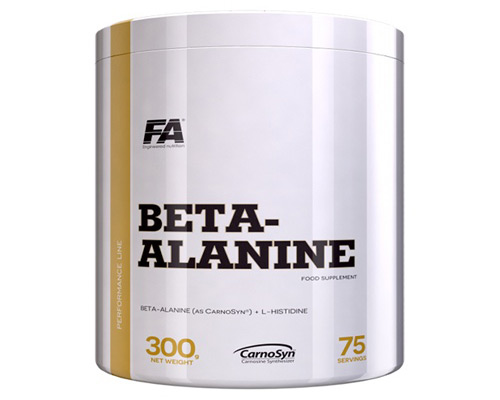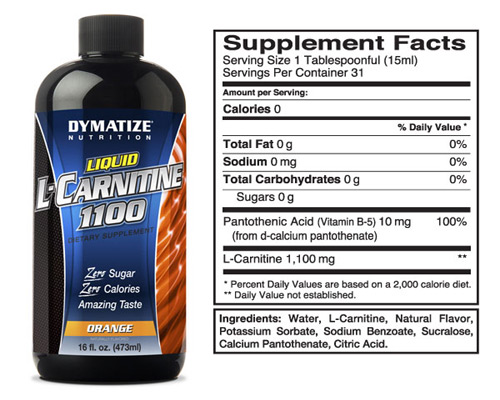
Not growing, despite your best efforts in the weight room? Here are a dozen errors you may be making nutritionally that are holding back your development — and how you can easily fix each one.
Muscle growth is not an exact science. If it were, we wouldn’t have much to write about every month in the pages of this magazine, and everyone who was interested in a bodybuilding physique would be walking around with 20-inch arms and ridiculously tight V-tapers. As it is, there’s plenty of room for error, both in the gym and the kitchen. And here’s the good news: Exact science or not, these nutritional issues are all rather easily remedied, meaning you can get growing — no doctorate or lab coat required.
1. You’re not choosing the right protein powder for key times during the day.
Most of the time, protein powders are an appropriate dietary choice because they provide a speedy source of aminos — much faster than getting protein from foods. First thing in the morning, before workouts and after workouts, you need fast-digesting proteins to get those aminos to muscles as fast as possible — at these times, whey is a very good bet. Before bed, however, you need a slower-digesting protein that will release aminos in a trickle, feeding muscles all night long — here, casein should be prominent in your protein mix. That being said, there’s value in whey, casein, soy and egg protein at any time of day, so feel free to make them all a part of your daily meal plan.
2. You’re not taking citrulline with your arginine.
We’re fairly sure you’ve heard of arginine, since it’s one of the more popular amino-acid supplements on the market. Once in the body, it raises levels of nitric oxide (NO), a gas that causes blood vessels to widen. Wider vessels mean more blood can circulate through them, not only bringing more nutrients to needy muscle tissue but also creating a pump, or temporary fullness, in muscles during workouts. While that pump will eventually dissipate, the pressure it puts on the tissues can prompt the muscle growth over time.
Bumping up NO levels is not arginine’s only job, however — it’s also required by various other body systems, which means that not all the arginine you ingest will be used to build muscle mass. That’s where citrulline comes in.
Also an amino acid, citrulline is converted into arginine in the body, but only after it has passed through the places where arginine gets taken up by the body. In fact, a study recently published in the British Journal of Clinical Pharmacology found that citrulline actually increased NO levels better than arginine did, and researchers hypothesized that it was precisely because arginine is used elsewhere. Our advice? Take both for massive pumps.
3. You’re not eating fruit for breakfast.
As tasty and as rich in vitamins and healthy fiber as it may be, fruit tends to be on our “limit” list because of its carb content. However, there are two times during the day when fruit is not only acceptable but almost mandatory. One is before workouts, when fruits’ slow-digesting carbohydrates offer long-term energy. The other is one you might not be aware of: immediately upon waking or, if you can’t handle food first thing, with breakfast.
Fruit contains a sugar called fructose, which isn’t processed by the body in the same way as glucose. Because it can’t be used directly by muscles, fructose detours to the liver, where it is converted to glucose (which can be used by muscles) and any excess is stored there as glycogen. The reason this circuitous route is critical at breakfast time is you haven’t eaten anything since the night before. As a result, your body is in a state called catabolism, which puts your muscles at risk of being broken down to fuel your body and is triggered when the liver’s glycogen levels drop too low. Because fructose travels straight to the liver, it quickly slams the brakes on catabolism. Grapes, pears, apples and bananas are good choices because they contain higher levels of fructose than many other fruits.
4. You’re not using beta-alanine.

There’s so much research being produced about this powerhouse supplement, a nonessential amino acid that helps improve carnosine levels in the body, that we can’t stress it enough. Take beta-alanine if you’re interested in increasing muscle growth, size, strength and endurance.
5. You’re not ingesting enough calories.
A diet doesn’t have to be all about losing weight. It can also be about gaining weight — the right kind of weight, that is. Gaining lean mass takes calories, approximately 18 to 20 per pound of bodyweight per day. Need help with the math? If you weigh 180 pounds, you need to eat between 3,240 (180 x 18) and 3,600 (180 x 20) calories per day. But while it may be tempting to walk into a Krispy Kreme and consume at least half of that tally in one sitting, that won’t exactly get you a load of lean mass. Instead, aim to divide those calories up among seven to nine smaller meals a day, spaced two to three hours apart. Your meal plan can look something like this, give or take a snack:
- Pre-breakfast
- Breakfast
- Late-morning snack
- Lunch
- Afternoon snack
- Preworkout
- Postworkout
- Dinner
- Pre-bedtime
Eating that frequently won’t always be easy, and if you’re tempted to cut out a couple of those snacks, aim your ax at the late-morning and afternoon snacks. Whatever you do, don’t get rid of the preworkout or postworkout meals. They’re critical for fueling muscle growth.
6. You’re not supplementing with forskolin.
Forskolin is an extract from the plant Coleus forskohlii, and it’s been shown to increase levels of the most important hormone to minting muscle: testosterone. It works in two ways. First, it increases testosterone production, which obviously increases total test levels. But forskolin also releases testosterone from a compound called sex hormone-binding globulin (SHBG), which binds to testosterone and transports it around the body. However, when testosterone is attached to SHBG, it can’t be taken up by muscle cells and, therefore, can’t affect muscle mass. Breaking that bond increases how much “free” testosterone flows through your veins — and into your muscles.
7. Too much of your protein is coming from whole-food sources.
We love a nice steak just as much as the next guy, but there’s a reason we don’t tuck into one a half-hour before we work out. One, we don’t feel like getting too up close and personal with the gym’s toilet facilities when that steak makes its way back up after a brutal set, and two, that steak’s amino acids will remain bound until way after you’re done working out, leaving your muscles hungry.
This is why protein powder is so important. Liquids are digested faster than solids, and whey protein remains a liquid as it travels through the body, allowing its aminos to be swiftly broken down and absorbed into the bloodstream. While there’s no percentage of total protein intake that should come from protein powders, there are three points in the day when powder rules: first thing in the morning (to flood fasting muscles with amino acids), preworkout (to ensure ample fuel for working muscles) and postworkout (to aid recovery and further boost muscle growth).
8. You’re going low-carb for too long.
You have a will of steel, and you use it to maintain a low-carbohydrate diet to boost your body’s fat-burning process. While you may be a paragon of virtue to those who just can’t seem to avoid the chips and candy bars, maintaining a low-carb diet for too long can have some adverse effects on your physique.

While your mind may be strong, your body is not. It wants food, and it has ways of getting it. The primary way is a hormone called leptin, which controls metabolism and hunger. Diet for too long and your body thinks you’re starving. To preserve existing body fat, leptin levels drop and your brain thinks it has saved the day. Tricking your brain into resetting those leptin levels and getting back to the business of burning fat is easy. Simply schedule a high-carb day once every five to seven days. But high carb doesn’t mean high fat. It’s the carbs that count, so don’t waste calories on fatty cake, ice cream, cookies or other treats. Instead, focus on high-carb, low-fat foods: pasta sans butter, bread sans peanut butter, angel food cake sans frosting, jelly beans, popsicles, sorbet, etc. Enjoy it while it lasts because the next day it’s back to lean protein and vegetables.
9. You’re not taking creatine.
Actually, this item should really be phrased thusly: YOU’RE NOT TAKING CREATINE?! Honestly, why not? Creatine is one of the most powerful, most proven supplements on the market today. While we could devote an entire article to this wondrous amino-acid-type compound, what you need to know is that it increases mass via a number of pathways. Here are a few. One, it boosts mass mechanically by increasing the amount of fluid held in muscle tissue — the pressure that fluid puts on the tissue can induce the muscle growth. Second, creatine increases levels of insulin like growth factor 1 (IGF-1), which is involved in muscle growth. Third, it boosts the amount of quick energy your muscle cells can draw on, allowing you to train heavier and complete more reps. There’s more, but hopefully you’re already convinced.
10. You’re not getting enough saturated fat in your diet.
This is the item that makes mainstream nutritionists break out in hives. While they’re busy telling you to limit saturated fat intake, we’re telling you that you shouldn’t limit it too much, unless you want to sacrifice your testosterone levels. Research shows that diets that contain less saturated fat yield bodies that contain less testosterone. So don’t shy away from fattier cuts of beef or other meats occasionally, particularly if you’re already following a low-carbohydrate diet.
11. You’re not supplementing with L-carnitine.

While it’s great to keep testosterone levels high (thanks, of course, to taking forskolin and keeping saturated fat in your diet, as mentioned earlier), it’s equally important to give all that testosterone somewhere to go. That’s carnitine’s job. Carnitine is an amino-acidlike compound, and it increases the number of androgen receptors in muscle cells almost immediately after you take it. Androgen receptors are the portals where testosterone enters cells, and having more of them equates to better uptake of testosterone. That, of course, means your muscles are better equipped to grow.
12. You’re not using alpha-lipoic acid after workouts.
Alpha-lipoic acid (ALA) is a powerful antioxidant and also improves insulin sensitivity, meaning your body will need less insulin to clear glucose from the bloodstream. Because insulin also promotes fat storage, reducing it is a good thing. Also a good thing? ALA has been shown to help creatine get into muscle cells, significantly increasing muscle-creatine levels. And more creatine, as we’ve told you before, can mean more mass.
The M&P Basic Mass Workout
When a hardgainer isn’t growing, you can usually find the culprit (or culprits) in his or her diet – but that’s not to say his or her training can’t use a bit of help, too. This workout is a straightforward approach to mass gain: Train hard and heavy four days per week, rest and repeat.
| Monday: Back and Biceps | |||
|---|---|---|---|
| BODYPART | EXERCISE | SETS | REPS |
| Back | Bent-Over Barbell Row | 5 | 15, 12, 10, 8, 6 |
| T-Bar Row | 4 | 12, 10, 8, 6 | |
| Pull-Up | 3 | 15, 15, 15 | |
| Seated Cable Row | 3 | 10, 8, 6 | |
| Pulldown to Front | 3 | 10, 8, 6 | |
| Biceps | Standing Barbell Curl | 5 | 15, 12, 10, 8, 6 |
| Incline Dumbbell Curl | 4 | 12, 10, 8, 6 | |
| Dumbbell Concentration Curl | 3 | 10, 8, 6 | |
| Tuesday: Chest, Triceps and Forearms | |||
| Chest | Incline Barbell Press | 5 | 15, 12, 10, 8, 6 |
| Flat-Bench Dumbbell Press | 4 | 12, 10, 8, 6 | |
| Decline Dumbbell Flye | 3 | 10, 10, 8 | |
| Cable Crossover | 3 | 10, 10, 8 | |
| Triceps | Lying EZ-Bar French Press | 5 | 15, 12, 10, 8, 6 |
| Cable Pushdown | 4 | 12, 10, 8, 6 | |
| Parallel-Bar Dip | 3 | 15, 15, 15 | |
| Forearms | Barbell Wrist Curl | 3 | 15, 12, 10 |
| Friday: Legs | |||
| Thighs | Barbell Squat | 5 | 15, 12, 10, 8, 6 |
| Leg Press | 4 | 12, 10, 8, 6 | |
| Walking Lunge | 3 | 15, 15, 15 | |
| Romanian Deadlift | 4 | 12, 10, 8, 6 | |
| Leg Extension | 3 | 12, 10, 8 | |
| Lying Leg Curl | 3 | 12, 10, 8 | |
| Calves | Standing Calf Raise | 4 | 15, 12, 10, 8 |
| Seated Calf Raise | 3 | 15, 12, 10 | |
| Saturday: Shoulders and Abs | |||
| Shoulders | Seated Barbell Press | 5 | 15, 12, 10, 8, 6 |
| EZ-Bar Upright Row | 4 | 12, 10, 8, 6 | |
| Dumbbell Lateral Raise | 3 | 10, 10, 8 | |
| Reverse Pec-Deck Flye | 3 | 10, 10, 8 | |
| Abs | Hanging Leg Raise | 3 | 20, 20, 20 |
| Machine Crunch | 3 | 20, 15, 10 | |
| Decline Twisting Crunch | 2 | 20, 20 | |
| Note: Sunday, Wednesday and Thursday are ‘off’ days each week. | |||





Leave a Reply